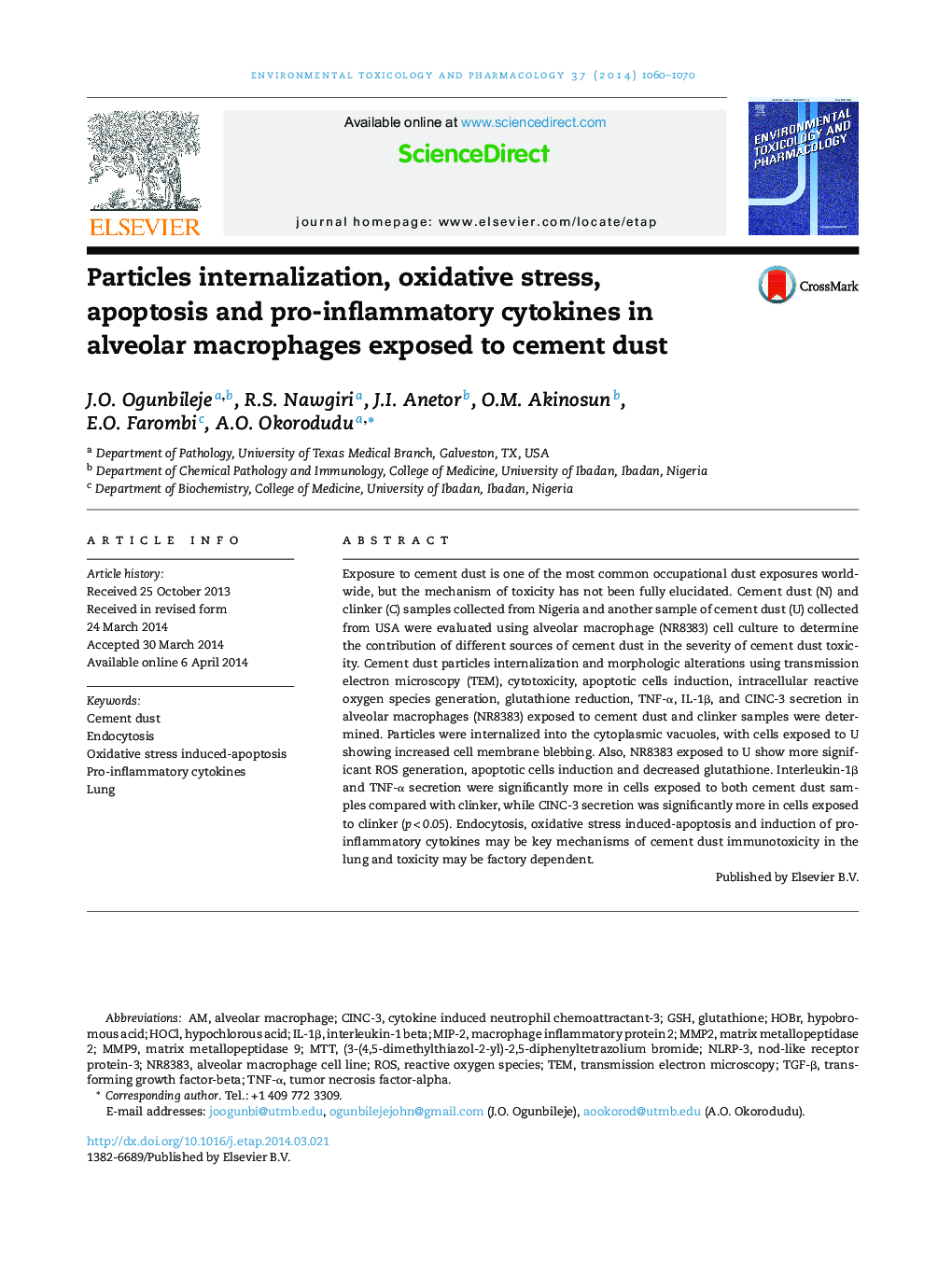| Article ID | Journal | Published Year | Pages | File Type |
|---|---|---|---|---|
| 5849117 | Environmental Toxicology and Pharmacology | 2014 | 11 Pages |
Abstract
Exposure to cement dust is one of the most common occupational dust exposures worldwide, but the mechanism of toxicity has not been fully elucidated. Cement dust (N) and clinker (C) samples collected from Nigeria and another sample of cement dust (U) collected from USA were evaluated using alveolar macrophage (NR8383) cell culture to determine the contribution of different sources of cement dust in the severity of cement dust toxicity. Cement dust particles internalization and morphologic alterations using transmission electron microscopy (TEM), cytotoxicity, apoptotic cells induction, intracellular reactive oxygen species generation, glutathione reduction, TNF-α, IL-1β, and CINC-3 secretion in alveolar macrophages (NR8383) exposed to cement dust and clinker samples were determined. Particles were internalized into the cytoplasmic vacuoles, with cells exposed to U showing increased cell membrane blebbing. Also, NR8383 exposed to U show more significant ROS generation, apoptotic cells induction and decreased glutathione. Interleukin-1β and TNF-α secretion were significantly more in cells exposed to both cement dust samples compared with clinker, while CINC-3 secretion was significantly more in cells exposed to clinker (p < 0.05). Endocytosis, oxidative stress induced-apoptosis and induction of pro-inflammatory cytokines may be key mechanisms of cement dust immunotoxicity in the lung and toxicity may be factory dependent.
Keywords
MMP2MMP9IL-1βMIP-2HOClGSHHOBrTGF-βNR8383(3-(4,5-dimethylthiazol-2-yl)-2,5-diphenyltetrazolium bromideMTTROSEndocytosisHypobromous acidhypochlorous acidTemInterleukin-1 betatransforming growth factor-betatumor necrosis factor-alphaLungPro-inflammatory cytokinesTNF-αmatrix metallopeptidase 2matrix metallopeptidase 9Alveolar macrophageTransmission electron microscopymacrophage inflammatory protein 2cement dustGlutathioneReactive oxygen species
Related Topics
Life Sciences
Environmental Science
Health, Toxicology and Mutagenesis
Authors
J.O. Ogunbileje, R.S. Nawgiri, J.I. Anetor, O.M. Akinosun, E.O. Farombi, A.O. Okorodudu,
